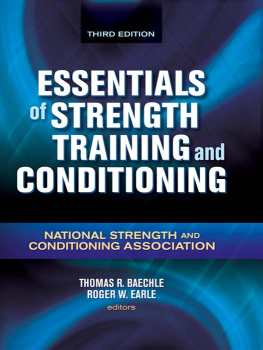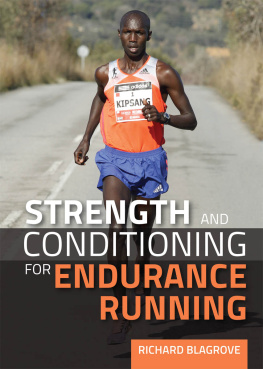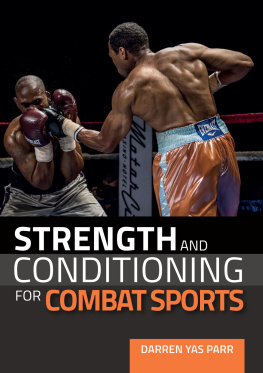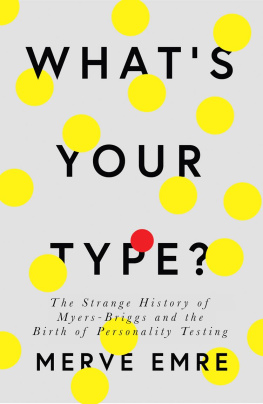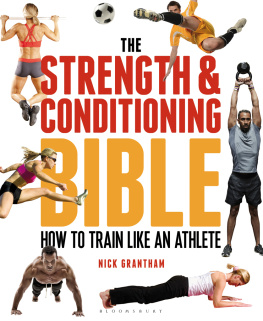The Strength Revolution: An Unconventional Guide to Strength and Conditioning
By
Emre Bardakci
Copyright
Copyright 2016 by Emre Bardakci
All rights reserved. Without restricting rights under the copyright reserved above, no part of this book can be reproduced, saved, introduced into a retrieval system, distributed or conveyed in any form or by any means, including without limitation photocopying, recording, or other electronic or mechanical methods, without the prior written authorization of the publisher, except in the case of brief quotations embodied in critical reviews and certain other noncommercial uses authorized by copyright law. The scanning, uploading, and/or distribution of this document through the internet or by any other means without the permission of the publisher is illegal and is punishable by law. Please buy only authorized editions and do not engage in or encourage electronic theft of copyrightable materials.
DISCLAIMER
This book is designed to give information on exercises and workouts only. This information is given and sold with the awareness that the publisher and author do not offer any other professional advice. This workout book includes some ideas for people to make their own equipment but if their equipment fails and they hurt themselves. The publisher and author will not be liable to you for any personal injury including serious injury or death that you may suffer. Nor will we be liable in respect of any other losses arising as a result of any such personal injury. On account of any such expertise consult with the appropriate professional. This book has been created for martial art athletes to develop functional strength or needs. Every attempt has been made to present this book as accurate as possible. Though, there may be content errors. Therefore, this book should read only as a general guide and not as the final source of subject information. This book includes information that might be aimed only to educate and entertain and anyone who decides to exercise should consult a physician earlier before trying these exercises. The author and publisher shall have no liability or responsibility to any person regarding any loss or injury incurred, directly or indirectly, by the information included in this book.
Emre Bardakci makes no representation or warranties with respect to the accuracy or completeness of the contents of this book and specifically disclaims any implied warranties of merchantability or fitness for any particular purpose and shall in no event be liable for any loss of profit or any other commercial damage, including but not limited to special, incidental, consequential, or other damages. The author discloses no such medical advice. Please note that much of this publication is based on personal experience and anecdotal evidence. Although the author and publisher have made every reasonable attempt to achieve complete accuracy of the content in this EBook they assume no responsibility for errors or omissions. Also, you should use this information as you see fit, and at your own risk.
You hereby agree to be bound by this disclaimer.
Table of Contents
My journey with martial arts started when I was two years old when my mother signed me up for Karate classes due to the interest I displayed at an early age. Surprisingly, I vividly remember these classes. I was born in the United States but my parents were Turkish and we moved back to Turkey when I was six years old. At 12 years old my dads friend suggested to my parents I start judo training at a club where his son was training. The day I walked into the Dojo, my life was changed forever.
I was truly meant for the sport of Judo, and, due to Turkeys geographical location, I was able to train with various Eastern European athletes. Many national teams visited my hometown, Antalya, and held their training camps there. I was lucky enough to learn the traditional Sambo Techniques from the Russian players, who took their time teaching me all the details of their native sport. I also had the chance to learn wrestling techniques from the Turkish wrestlers, which happens to be the national sport of Turkey.
I advanced quickly and won multiple regional tournaments, and placed 4 th in Nationals during my second year in high school. My coaches trained and treated me as an Olympic hopeful. My parents unfortunately did not want me to focus on training for the Olympics since Judo was not a sport that was supported by the government. My parents were educators, and my family moved back to the United States when I was eighteen so my sister and I could attend an American University.
During my training in Turkey, I was mostly intrigued by how some of these Eastern European athletes got in shape. Some were massive, and they often bragged about not lifting any weights. This is where I learned about the power of calisthenics. This was a long time before YouTube videos of the Bar Brothers hit the internet. Some were small and even skinny but they were some of the strongest men I have ever met. I, later on, found that this is due to the elite neuro muscular efficiency they had. These athletes performed various body weight exercises, high volumes of rope climbs, handstand walks, neck bridges for long durations, kettlebell drills, etc. I was lucky to train with a 10-time Ukrainian National Champion named Denis. Denis was known for not lifting any weights, he could do countless flips from a back neck bridge position, and he could hold neck bridges for 30 minutes easily. He had an amazing suplex which is a backwards pick up style throw, and he purposely performed these exercises to build the pre-requisite strength needed for his suplex throws. Being thrown by him felt like going upside down on a roller coaster. It was a scary experience and once he got close and locked you in, there was almost no way out. Denis performed multiple single arm push ups, unique monkey bar plyometric exercises, upside down rope climbs, single leg squats, handstand walks, and he also grappled for countless hours with world class athletes which helped him with building phenomenal strength. His training methods were quite unorthodox, especially at the time for when I met him..
There were also many other elite Eastern European athletes. I had the opportunity to train with these athletes who mostly had a unique hybrid method of training which included training with bungee chords, gymnastic rings, rock (lifting and throwing), kettlebells, body weight, logs, etc. They also performed regular conventional barbell and dumbbell lifts, but there were so many additional unorthodox strength exercises they performed alongside these exercises; and their conventional exercises was just a small part of their training puzzle,
These men did countless hours of technique drilling and they were super technical, but I could not help notice how unconventional their strength and conditioning methods were, and how much strength played a role in their success in combat sports. This might have been due to various factors such as not having the latest equipment. They had a minimalist approach when it came to strength and conditioning and this made them think outside the box. They were masters in unconventional strength training after years of trial and error of defining training methods. After all, Eastern Europe was where equipment such as kettlebells and Bulgarian bags were originated.
The athletes I trained with were incredibly strong. Steve Maxwell wrote an article on Turkish oil wrestling for a health magazine, and he wrote a short description of his training experience in Turkey. He was fascinated with the sport and their training methods. It is no coincidence that athletes such as Naim Suleymanoglu were produced in Turkey. Naim is renowned as one of the best athletes in the history of Olympic lifting by most lifting coaches. He was the first and only Olympic lifter who snatched 2.5 times his bodyweight. Naim holds multiple Olympic and World Championship gold medals. Turkey also produced many Olympic and World champions in wrestling along with Judo Olympic Gold Medalist such as Huseyin Ozkan.
Next page

